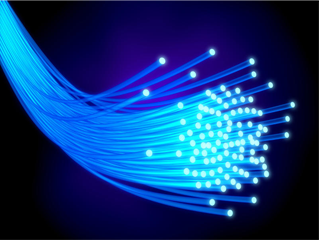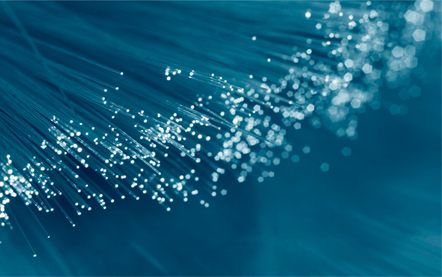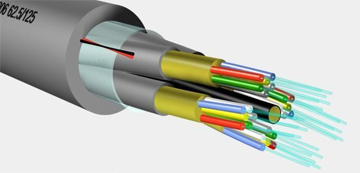What is fiber optics?
Fiber optics is the transmission of information as light impluses.



We're used to the idea of information traveling in different ways. When we speak into a landline telephone,
a wire cable carries the sounds from our voice into a socket in the wall, where another cable takes it to the local
telephone exchange. Cellphones work a different way: they send and receive information using invisible radio waves—
a technology called wireless because it uses no cables. Fiber optics works a third way. It sends information coded in
a beam of light down a glass or plastic pipe. It was originally developed for endoscopes in the 1950s to help doctors
see inside the human body without having to cut it open first. In the 1960s, engineers found a way of using the same
technology to transmit telephone calls at the speed of light (normally that's 186,000 miles or 300,000 km per second in
a vacuum, but slows to about two thirds this speed in a fiber-optic cable).
A fiber-optic cable is made up of incredibly thin strands of glass or plastic known as optical fibers; one cable can have
as few as two strands or as many as several hundred. Each strand is less than a tenth as thick as a human hair and can carry
something like 25,000 telephone calls, so an entire fiber-optic cable can easily carry several million calls
